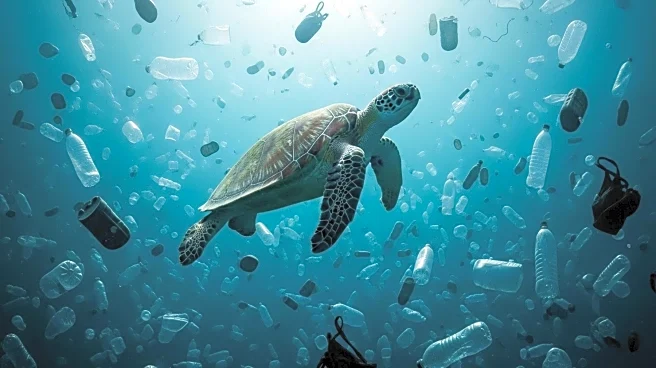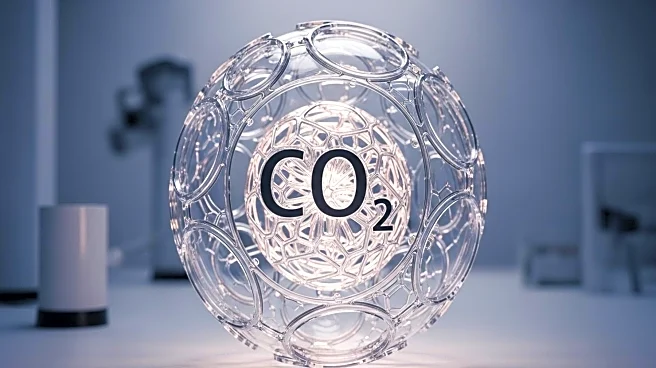What's Happening?
A study conducted by Coventry University’s Centre for Agroecology, Water and Resilience highlights the environmental risks posed by disposable face masks used during the Covid pandemic. The research reveals that billions of plastic face masks are breaking down, releasing microplastics and chemical additives, including endocrine disruptors. These masks, primarily made from polypropylene, were used extensively during the pandemic, with an estimated 129 billion masks used monthly worldwide. Without a recycling stream, many masks ended up in landfills or littered in various environments, where they have begun to degrade. The study found that FFP2 and FFP3 masks leached the most microplastics, releasing four to six times more than other types. Additionally, chemical analysis revealed the release of bisphenol B, an endocrine-disrupting chemical, into the environment.
Why It's Important?
The findings underscore the environmental impact of single-use face masks, which could have long-term consequences for ecosystems and human health. The release of microplastics and chemicals like bisphenol B poses risks to both terrestrial and aquatic environments. This situation highlights the need for sustainable alternatives and improved waste management practices. The study calls for increased awareness of these environmental risks and the development of more eco-friendly mask options. As the world continues to grapple with the aftermath of the pandemic, addressing the environmental cost of protective equipment is crucial for safeguarding public health and preserving natural ecosystems.
Beyond the Headlines
The study raises ethical considerations regarding the production and disposal of single-use masks. It prompts a reevaluation of consumer habits and the prioritization of sustainable practices in healthcare and personal protection. The research may influence policy discussions on waste management and environmental protection, encouraging governments and industries to invest in sustainable solutions. The long-term presence of microplastics and endocrine disruptors in the environment could lead to regulatory changes and increased scrutiny of product safety standards. This development highlights the interconnectedness of public health and environmental sustainability, urging a holistic approach to crisis management.











